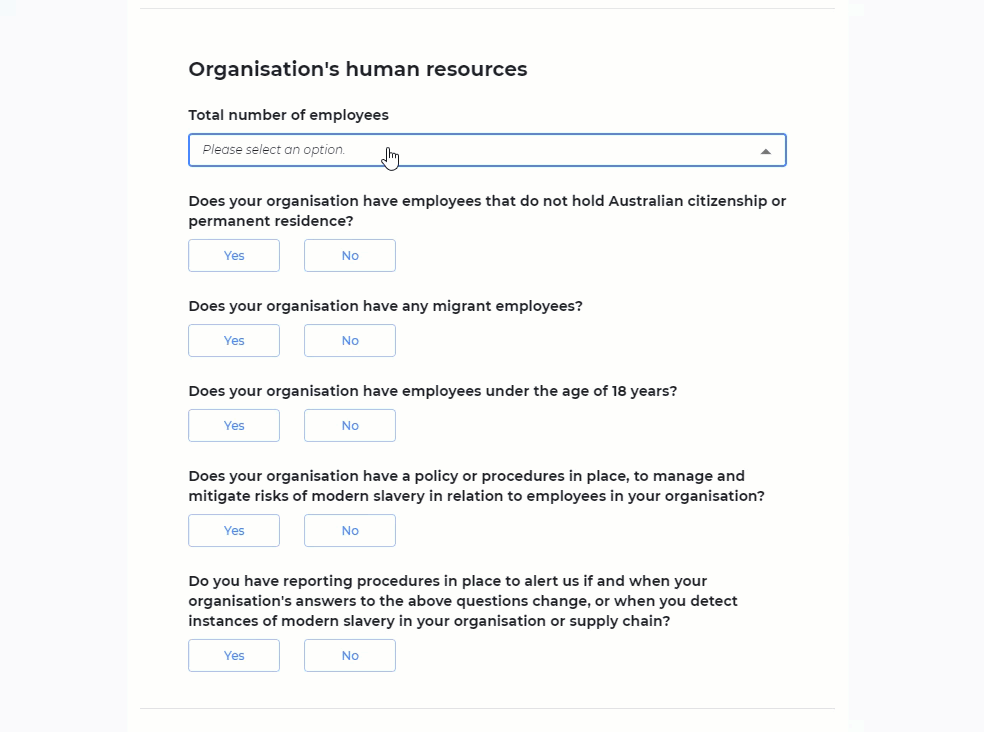Over the years, many organisations have shifted their training programmes from in-classroom sessions to online training. People in the modern workplace may have flexible working arrangements, such as remote working and part-time hours, or work in globally-dispersed teams, all of which can make face-to-face training inefficient and costly for organisations. But online training can be accessed anytime and anywhere. People can learn at their own pace and organisations can easily administer courses and track user completions.
But creating online training isn’t as simple as making some presentation slides with images and text. The content and design of a course needs to drive engagement in order for people to successfully learn, retain and apply new information to their job.
So how can you make sure that your training courses stimulate engagement and learning? Let’s look at 6 key elements that facilitate engaging online learning solutions.
1) Ensure that content is relevant
Have you ever been enrolled in a training course where the information was unrelated to your job? You might have felt the training was a waste of time or boring.
When rolling out online training courses, consider what is necessary for each employee to learn about. For example, you want to roll out equality and diversity training in a particular department because there have been several cases of bullying in that team. Find out what the specific issues are in the team and tailor the training to address those problems. This way, the information is relevant and employees can apply what they have learned directly to their job.
Review the material and make sure all of the content in the training helps meet the learning objectives. Content that is unrelated or doesn’t help deliver the learning outcomes is irrelevant and should be omitted.
2) Keep it simple
In training, more isn’t necessarily better. Lots of diagrams, graphics, colours, lengthy text and complex navigation can be overwhelming and distracting, which can hinder engagement and learning.
Keep the content simple. When writing or reviewing the training material, ask yourself:
- Is there a simpler way of saying it? If there is, rephrase it so it is active, clear and short.
- Do the visuals reinforce the learning content and are they easy to understand? If the visuals don’t aid learning or if they are overly complex, delete it from the course or find a new visual.
- Does the screen look busy? If it seems cluttered, reduce the text or remove/replace some graphics.
- Will the learner understand what to do on this screen? If it might be confusing, add in instructions or make the interaction or navigation simpler.
3) Incorporate interactions
Add in interactions like drag and drop, multiple choice, branching scenarios, and clickable screens to make the courses more interactive and engaging. With interactive question screens, learners have to stop and think about the question(s) instead of just skimming through a block of text.
Interactions like click screens also make it easier for learners to absorb large amounts of information through ‘chunking’. So instead of presenting three large paragraphs of text, split up the content into separate clicks with an associated image or icon.

4) Use active learning
Traditional learning environments use passive learning, where learners are presented information and then tested on that information. Active learning does the opposite – learners are presented with a question or problem and are asked to solve it prior to being presented with the information. For example, instead of outlining what inclusive language is, add in a multiple choice question where they have to identify what language they think is inclusive. Or have them match inclusive language to the correct characteristic in a drag and drop interaction. This way, learners explore and solve problems for themselves using the combination of critical-thinking skills, experimentation and prior knowledge of the subject, which is proven to be more effective towards long-term learning. Even if they answered the question incorrectly, people learn through their mistakes and by any feedback provided to them.

5) Make it scenario-based
The use of scenario-based learning allows learners to experience ‘real-life’, relatable situations, giving them an opportunity to solve problems and learn from their decisions.
For example, you need to inform your employees about possible trip hazards in the workplace to protect their health and safety. Instead of just listing the different hazards and their responsibilities, create a situation that has occurred or that could occur at work. This gives employees a practical example of how, when and where trip hazards could occur and what actions they should take if they encounter this type of situation.
Scenarios can be used sporadically throughout a course or as a continuous story across multiple screens or the entire course. Either method of scenario-based learning has shown to be an effective way to transfer knowledge and facilitate the application of learning.

6) Communicate training value and outcomes
You won’t stimulate engagement and learning if training is viewed as a box-ticking exercise or something that everyone just has to do. People need to understand the value of the training. Communicate to them what they should expect to gain from learning this new information and how that will benefit them directly – not necessarily what the organisation will get out of it.
Communication doesn’t stop after training has been rolled out. Be transparent about any successes or areas of improvement as a result of the training. For example, after everyone took our health and safety training, there has been an x% reduction in accidents and near misses.
And don’t forget to praise your staff for their efforts. People are more likely to be engaged in future training sessions if they are recognised for their hard work and know their efforts can positively impact the workplace.
Conclusion
Improving people’s learning experiences can help to change how people go about their work tasks and drive organisational change. But online training needs to engage employees for knowledge transfer, retention and application to successfully occur.
You can make your training engaging by making the content relevant, simple and interactive. Incorporating active learning and scenario-based learning allows people to apply critical thinking, experimentation and prior knowledge towards solving real-world problems. Lastly, communicate with your staff about the value behind training and the outcomes afterwards, being sure to recognise people for their hard work and commitment.
While you can’t force people to learn, with the right content and instructional design, online training has the opportunity to inspire engagement and learning throughout your organisation.










